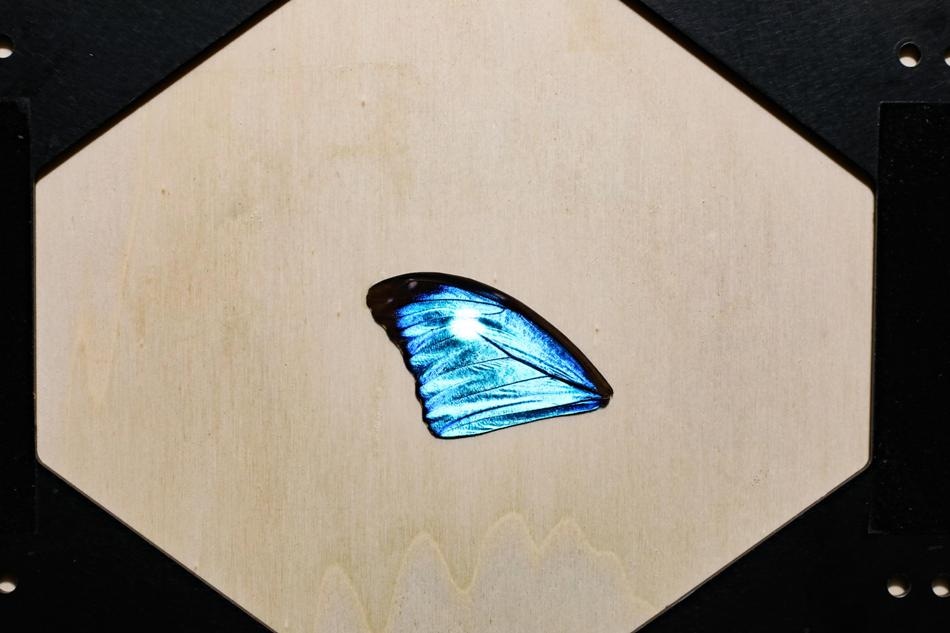Jul 30 2019
A group of scientists from EPFL has set itself the towering target of constructing the largest-ever database that digitizes the visual appearance of all natural and synthetic materials in the world.
 Digitize a butterfly wing. (Image credit: 2019 EPFL Alain Herzog)
Digitize a butterfly wing. (Image credit: 2019 EPFL Alain Herzog)
Is it feasible to digitally simulate how light shines off silk, the structure of fabrics, plastics, and stones, or the kaleidoscope of colors on butterfly wings? A group of scientists at EPFL’s Realistic Graphics Lab, led by Wenzel Jakob, has been creating computer models to perform exactly this. Their process starts by carefully digitizing any material on which they can place their hands, using an advanced machine known as a gonio-photometer.
Imagine capturing a picture of a car on a sunny day: the picture will only capture its appearance for that particular perspective and illumination, but it cannot reveal how the same car would appear from another perspective later in the evening.
Unlike a camera, a gonio-photometer quantifies the light reflected by a material at various angles, capturing the fundamental nature of what offers the car’s painted surface its special appearance: pearlescent, shiny, faded, metallic, and so on.
The resultant data is much more abundant when compared to a single photograph and can be employed to produce photorealistic computer images of objects formed from those same materials within arbitrary virtual scenes.
The group at EPFL, headed by Professor Wenzel Jakob, investigates how light interacts with different materials in order for this process to be replicated in a software simulation.
Our goal is to put together a very comprehensive library of materials—not just to recreate them, but also to understand mathematically what makes them look the way that they do.
Wenzel Jakob, Realistic Graphics Lab, EPFL
The scientists aim to digitize samples ranging from a sheet of paper and a piece of plastic from a pen to a butterfly wing and even a piece of fabric from a Darth Vader dress. “This kind of material data is invaluable in areas like architecture, computer vision, or the entertainment industry. We’ve recently started working with Weta Digital and Industrial Light & Magic, who make movies like Avatar and Star Wars,” he stated further.
Creating Images that Look Like the Real Thing
The gonio-photometer is a remarkable machine with a length of about 5 m. It is made to run in a room, where the walls are covered with black cloth to absorb the light reflected by the sample being examined. The sample is positioned in the middle of the device, where it is examined from the tip of a robotic arm that rotates with a speed of up to 3 m per second so that measurements can be obtained quickly for several configurations.
A conventional camera only records red, green and blue color information that is visible to the human eye. We instead use a spectrometer that records hundreds of wavelengths throughout the entire visual spectrum, extending even to UV and infrared. That wealth of data provides us with much more information about a material that enables us to simulate its appearance extremely precisely.
Wenzel Jakob, Realistic Graphics Lab, EPFL
The group has created a new algorithm that takes complete control of the gonio-photometer to just capture a small subset of an impossibly large 4D space, allowing materials to be digitized much more quickly than before.
In addition, Jakob’s team creates the Mitsuba Renderer, an extensively used open-source software platform that reproduces light computationally to develop photorealistic images of virtual worlds. The obtained data enables these simulations to currently realize an exceptional level of accuracy.
Digitizing and replicating the world of materials
(Video credit: EPFL)